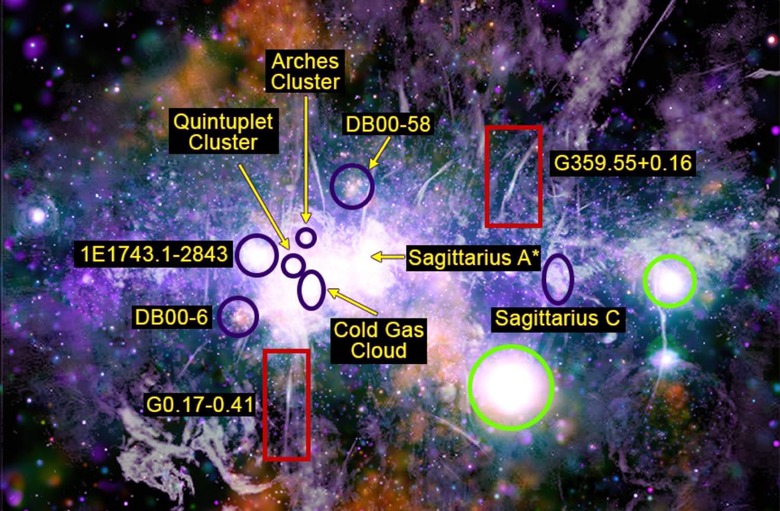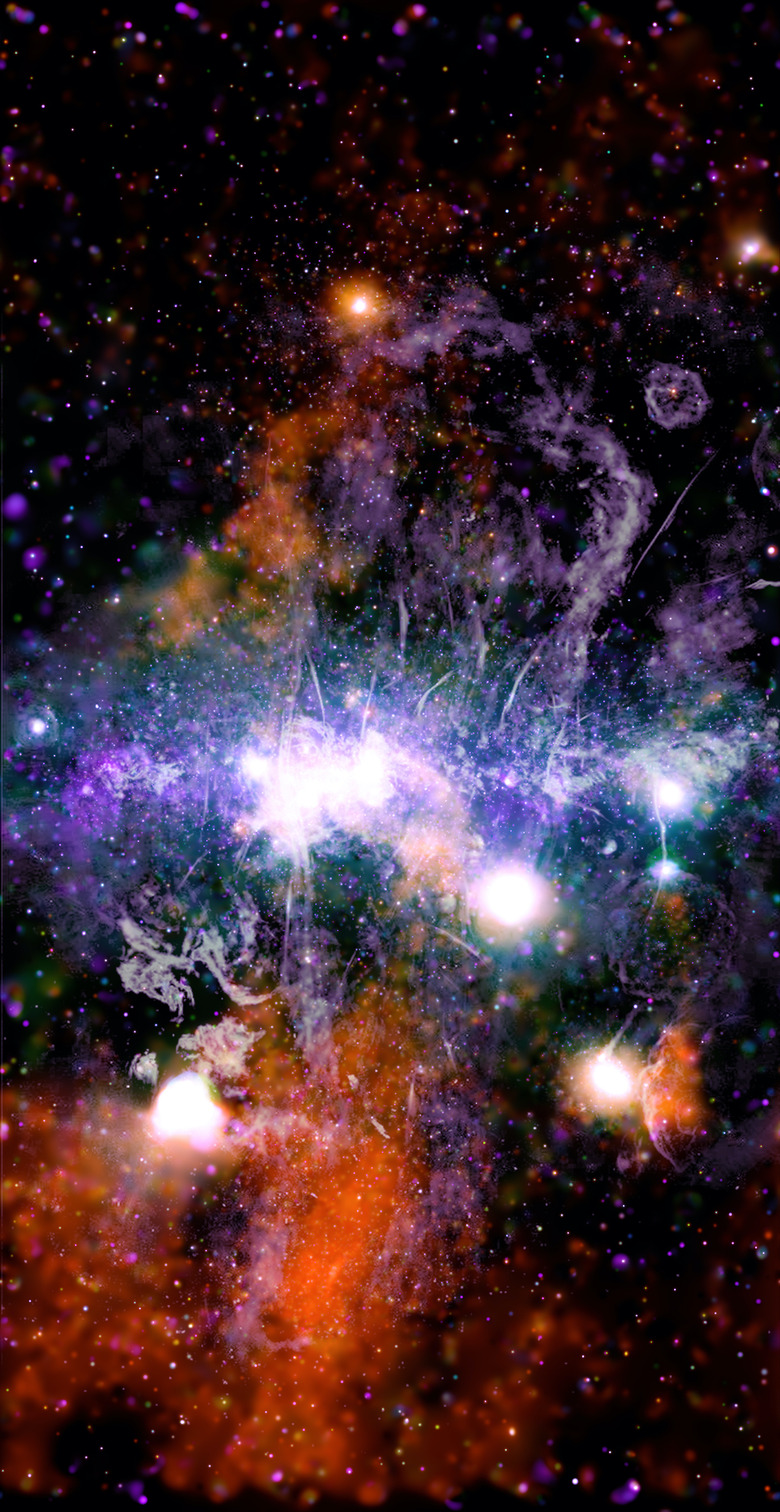Jaw-Dropping Galactic Center Image Could Show The Key To Birthing Stars
A mesmerizing new image at the frothing heart of the Milky Way have ignited new questions about the interplay of magnetic fields and superheated gases deep within our home galaxy. The new Galactic Center panorama taps a vast trove of data both from NASA's Chandra X-ray Observatory and the South African MeerKAT radio telescope, and in which plumes of gases surge hundreds of light years through space.
Indeed, it's difficult to conceptualize a sense of scale when you look at the new image. Previous visualizations of the Galactic Center – the point around which the whole spiral galaxy rotates – have typically adopted a closer framing; this updated version taps fresh high-energy data from Chandra looking above and below that plane.
While an incredible image in its own right, the picture also highlights some of the mysteries and new theories about the interplay of energy in our local universe. In particular, there are suggestions that the same forces which see our Sun create space weather that can have a significant impact on Earth, could also be shaping huge tendrils of superheated particles on a much larger scale. As a result, it could help explain some of the frenzied Galactic space weather that has been observed.
"One thread is particularly intriguing because it has X-ray and radio emission intertwined," NASA explains. "It points perpendicular to the plane of the galaxy and is about 20 light years long but only one-hundredth that size in width."
That could, according to a new study by Q. Daniel Wang of the University of Massachusetts at Amherst, be the handiwork of invisible magnetic fields that have rippled like ribbons in the wind. Through a process called magnetic reconnection, different fields initially aligned in opposing directions can collide, and then become twisted around each other. In turn, they can drag long streamers of gas out through the solar system.

There's plenty of material to choose from, too, not to mention some seriously potent forces at play. That includes everything from stars going supernova, through to the impact of Sagittarius A*, the supermassive black hole believed to be at the heart of the galaxy.
"These plumes may represent galactic-scale outflows, analogous to the particles driven away from the Sun," NASA says of Wang's research, currently in preprint. "The gas is likely heated by supernova explosions and many recent magnetic reconnections occurring near the center of the galaxy. Such reconnection events in the Galaxy are normally not sufficiently energetic to be detected in X-rays, except for the most energetic ones at the center of the Galaxy, where the interstellar magnetic field is much stronger."
Beyond the aesthetics, it could help explain how new stars are actually created. Magnetic reconnection, it's theorized, could be a key factor in heating interstellar gases, raising the temperature of the material between existing stars. That could lead to more turbulence in that medium, effectively kickstarting the eruptions of energy that are involved in stellar birth. There are more images from the new data collations available at NASA's Chandra site.

